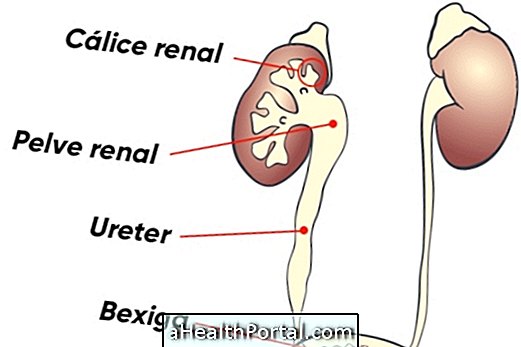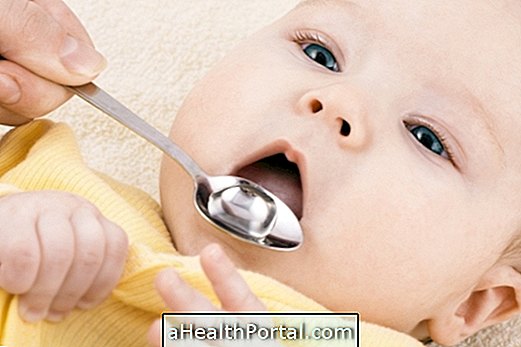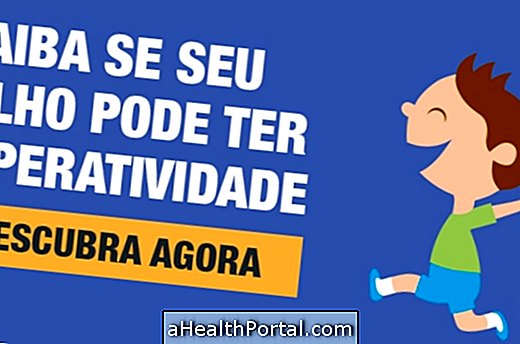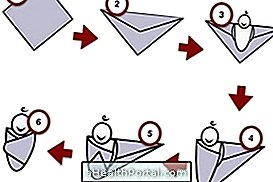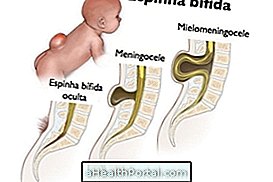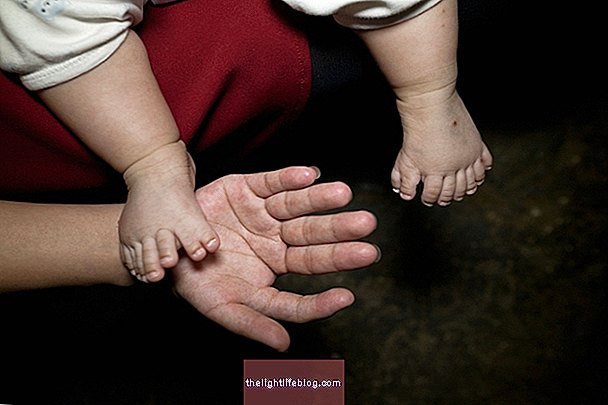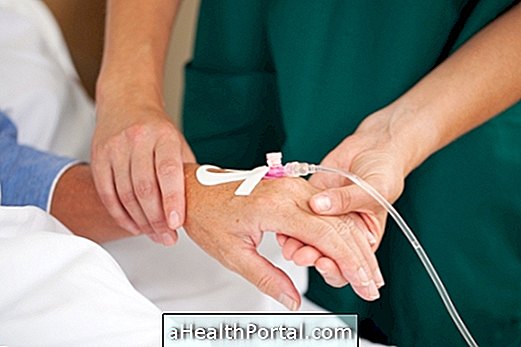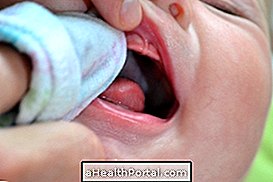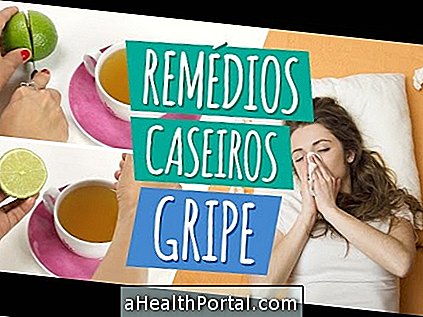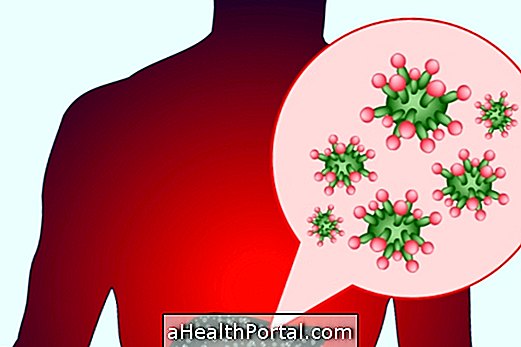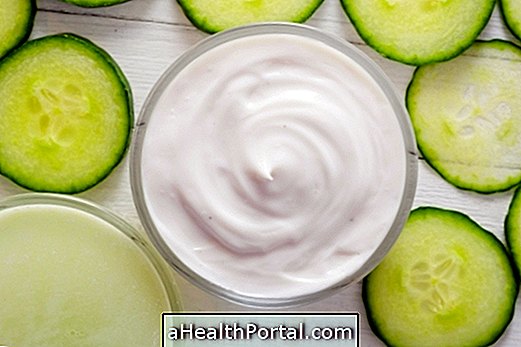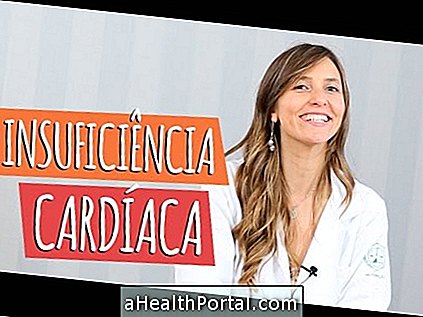Chickenpox, Mumps, Virose or Pneumonia are common diseases in infants, which often arise due to the baby's fragile and sensitized immune system.
All these diseases to which the baby is subject, easily leave a worried and worried mother, who often does not know what to do. So, to be well prepared, here is a short list of the most common diseases in the baby and their respective treatments.
1. Catapora
Chickenpox or Varicella is a disease that is transmitted by a virus and is highly contagious, especially among children. In the baby the Catapora is easy to identify, because it causes red marbles on the skin that become bubbles with fluid, fever, itching and loss of appetite. These symptoms are very uncomfortable for the child, which causes her to become tearful, uncomfortable, and restless.
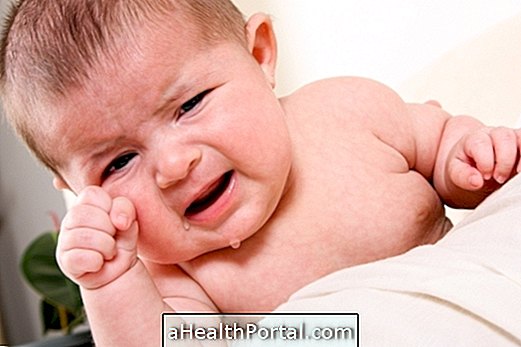
How to Treat:
Chickenpox is a disease that can be prevented with the Viral Tetravalent Vaccine, which protects the baby against this and other viral diseases such as Measles, Mumps and Rubella.
To treat cataracts, your pediatrician may recommend the application of ointments on the skin such as Povidine or Iodopovidone, which relieve itching and help the wounds to heal faster as there is no treatment to eliminate the virus from the body.
In addition, since the Catapora is highly contagious, it is recommended that the baby does not have contact with other children for 5 to 7 days, which is the period of contagion of the disease. See what other care you should take during treatment at Chickenpox in Baby.
2. Measles
Measles usually occurs in the baby after 12 months of age, and causes symptoms such as high fever, redness, tearing and itching of the eyes, bluish-white spots inside the mouth and reddish-purple patches on the skin, which makes the baby tearful, restless and without appetite.
How to Treat:
When the baby gets this disease, the pediatrician recommends taking analgesic and antipyretic medicines, which relieve the symptoms of pain, fever and discomfort, as there is no treatment to eliminate the virus from the body.
As with Catapora, this disease is highly contagious, so it is recommended that the baby does not have contact with other children during recovery. Here's how to treat measles in Baby.
3. Lightning
Mumps, also known as mumps, is another viral disease very common in children. This infectious disease catches itself through the coughing, sneezing or speaking of infected people and causes increased volume of the salivary glands in the neck, pain, fever and general malaise. These symptoms leave the baby with the neck area swollen, tearful and restless.
How to Treat:
To treat Mumps, the pediatrician usually recommends taking pain and inflammation medicines, which relieve pain, fever and discomfort, as there is no treatment to eliminate the Mumps virus from the body.
In addition, during recovery of the baby or the child is also recommended to make a soft and pasty feeding and apply warm compresses on the swelling. Understand how the Treatment of Mumps is.
4. Flu or cold
Due to the immune system, the flu and colds are common, especially during the first year of the baby's life. You can easily recognize the symptoms of cold in your baby if he has a stuffy nose, coughing, watery eyes, sneezing or even a fever.

How to treat:
To treat colds and flu, your pediatrician may recommend the use of an antipyretic if there is fever, but in most cases it is recommended to wait for the baby's immune system to be able to fight the disease. In addition, there are some precautions that are recommended during recovery, which include fever control, inhalation to facilitate breathing and eliminate phlegm and maintenance of hydration through breastfeeding. See the Home Remedies for Influenza as a Baby.
5. Virose
Viruses also arise due to the child's weakened system, and cause cramps, vomiting and diarrhea, which makes the baby irritated and tearful. Learn how to identify the virus in: Fever, vomiting and diarrhea are Virose Symptoms.
How to treat:
If you notice these symptoms in your baby, especially if he vomits frequently and has severe diarrhea, he should take him immediately to the hospital or emergency room. One of the major problems with viruses is the risk of dehydration, so it is recommended that you breastfeed frequently.
If your baby is already eating solid foods, you should focus on a low-fat, low-fat diet that includes easily digestible foods such as rice or puree, for example by maintaining hydration with water and tea.
6. Skin Dermatitis
Dermatitis on the baby's skin, especially in the diaper region is common, and causes symptoms such as irritation, redness, blistering or fissures in the skin.

How to Treat:
To treat dermatitis you should change your baby's diaper regularly and pass cream or ointment against diaper rash every time you change your diaper. In addition, it is also contraindicated the use of talc, as it dries the skin and favors the appearance of rashes. See how care should be taken with each diaper change on How to prevent diaper rash on the baby.
If after a few days the dermatitis does not improve or if there are signs of blistering or fissures with pus, in this case you should consult your pediatrician as soon as possible, so that he can indicate the most appropriate treatment.
7. Ear infection
Otitis can often arise after the flu or colds, and it is an infection in the baby's ear. Generally, when you have otitis the child gets pain in the ear, runny nose or fever and so he cries intensely, getting restless, angry and lacking in appetite. Know the causes and how to treat otitis in: Earache in the baby.
How to treat:
To treat otitis, you should take your baby to a pediatrician so that he can identify the problem. Treatment usually involves the administration of drops into the baby's ear containing antibiotics or corticosteroids. In addition, in some cases the doctor may also prescribe remedies to relieve pain such as Paracetamol.
8. Pneumonia
Pneumonia often arises after a cold or flu, and consists of a lung infection caused by bacteria or viruses. Generally, when you have pneumonia, the baby has a persistent cough with phlegm, wheezing when breathing, difficulty breathing and fever above 38ºC, which makes him crying, restless and irritated.
How to treat:
If you notice these symptoms in your baby, you should take him immediately to the hospital or emergency room, so that he can be treated immediately. Pneumonia is a serious infection, which needs to be treated with antibiotics, in case it is a bacterial or viral for example.
Also, since it is a problem that causes catarrh, it may be recommended that you often suck nose phlegm with your own pumps, and make 1 or 2 nebulisations with saline, which aid in phlegm expulsion and facilitate breathing. Learn more about treating pneumonia in How to Identify the Symptoms of Pneumonia in Infants and Children.

9. Thrush
Thrush, also known as oral candidiasis, is a common oral infection in infants, which results from the body's contact with the virus. Small white dots that can form plaques similar to other milk may appear on the tongue, gums, inner cheeks, mouth, or lips, causing discomfort, irritability, and crying in the baby.
How to treat:
To treat thrush, the pediatrician usually recommends the local application of antifungal agents in liquid, cream or gel, such as Nystatin or Miconazole. See How to identify and cure Baby Thrush.
If the infection reaches the throat and esophagus, there may be severe pain, difficulty swallowing, swelling of the throat and fever and in this case you should take the baby to a hospital or emergency room, as these are already symptoms of a more serious infection.
10. Spines
Pimples are not caused by a type of Acne called Neonatal Acne, which causes the appearance of pimples and blackheads on the face of the baby or newborn. This problem arises due to the hormonal changes that happen and usually disappear around 3 months of age.
How to treat:
Normally, Neonatal Acne disappears spontaneously, and no specific treatments are required. However, if you find that the pimples do not dry out or appear to be inflamed, you should consult your pediatrician so that he can indicate a treatment.
